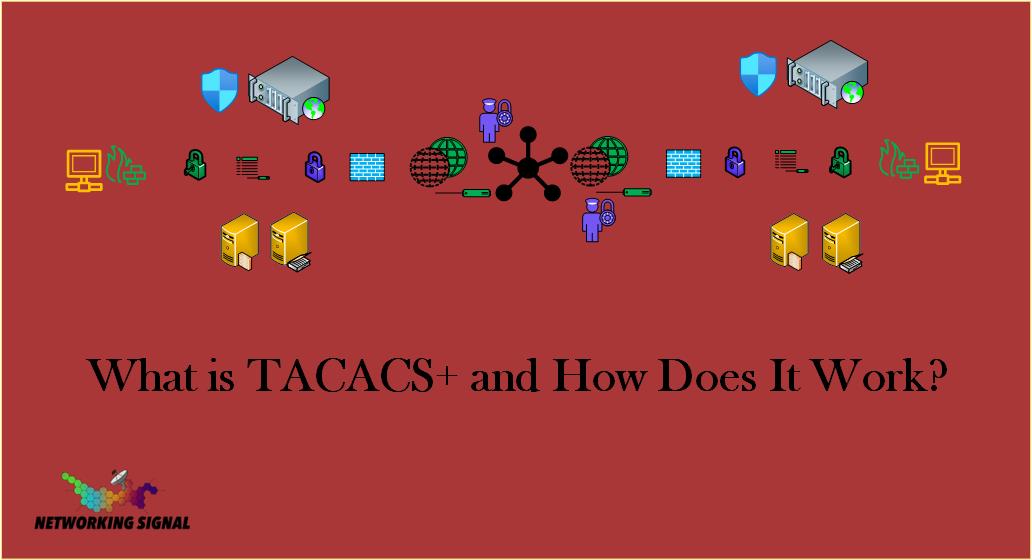What is TACACS+?
TACACS+ (Terminal Access Controller Access Control System Plus) is an authentication protocol used to secure access rights for users on a network. It verifies the identity of users logging into the network and controls what services, resources, and operations they are allowed to access.
The protocol was developed by Cisco Systems in order to better meet the needs of customers with larger networks.
TACACS+ is an upgrade from the original TACACS protocol, adding more robust authentication and authorization capabilities. It also supports encryption to protect transmitted data from being intercepted or modified during transmission.
What are the Functions of TACACS+?
Here are the main functions of TACACS+:
- Authentication: Verifying the identity of users logging into a network
- Authorization: Determining the services, resources and operations a user can access
- Accounting: Monitoring user sessions and recording records for billing or audit trails
- Encryption: Protecting transmitted data from being intercepted or modified during transmission.
How Does TACACS+ Work?
The working of TACACS+ involves three main components: a client, an authenticator, and an authentication backend.
- The client is the device or program that is attempting to access the network.
- The authenticator is responsible for receiving requests from clients, decrypting them, and then passing them on to the authentication backend.
- This component also receives responses from the authentication back-end and passes them on to the client.
- The authentication backend is responsible for verifying the identity of clients, authorizing access rights, and keeping records of user activities.
What are Some other Protocols the Same as TACACS+?
Here are some other authentication protocols that are similar to TACACS+:
- Kerberos: A trusted third-party authentication protocol used for secure communication on a network.
- RADIUS (Remote Authentication Dial In User Service): An access control protocol used for authenticating and authorizing users in a network.
- Secure Shell (SSH): A cryptographic network protocol used for secure communication between two computers.
- CHAP (Challenge-Handshake Authentication Protocol): An authentication protocol that uses challenge and response messages to verify a user’s identity.
- NTLM (NT LAN Manager): A proprietary Microsoft authentication protocol used in Windows networks.
What are the Benefits of TACACS+?
There are several benefits of TACACS+:
- It provides an extra layer of security by encrypting transmitted data.
- It enables administrators to control who can access what resources on the network.
- It offers detailed logging capabilities which allow for better audit trails and user activity tracking.
- It improves scalability and flexibility, allowing for easier management of larger networks.
- It simplifies authentication and authorization processes, allowing for faster user management.
What are the Drawbacks of TACACS+?
Here are some potential drawbacks of TACACS+:
- It can be more complicated to configure and manage than other authentication protocols, such as RADIUS.
- It is prone to vulnerabilities due to its reliance on encryption algorithms.
- The protocol can be vulnerable to denial-of-service attacks if not implemented with adequate security measures.
- It requires additional hardware resources for good performance.
- It is not compatible with all networking equipment and software applications.
What are the Use Cases of TACACS+?
Here are some common use cases for TACACS+:
- Providing secure access to network devices, servers, and applications
- Enabling logging of user activities for security audits
- Allowing administrators to control who can access what resources
- Establishing an extra layer of protection for sensitive data
- Automating authentication and authorization processes for faster and more efficient user management.
How We Can Use the TACACS+ in Server With Example?
Let’s say you have an application server that stores confidential customer data.
In order to ensure that only authorized users can access this data, you would implement a TACACS+ authentication system on the server. When users try to log in, their credentials would be sent to the authentication server which would then validates them.
If the credentials are valid, access will be granted otherwise, access is denied. This way you can ensure that only authorized personnel have access to sensitive data.
You can also use TACACS+ for logging user activities, allowing administrators to track who is accessing what resources and when. This is important for security audits as well as for preventing unauthorized access to sensitive data.

